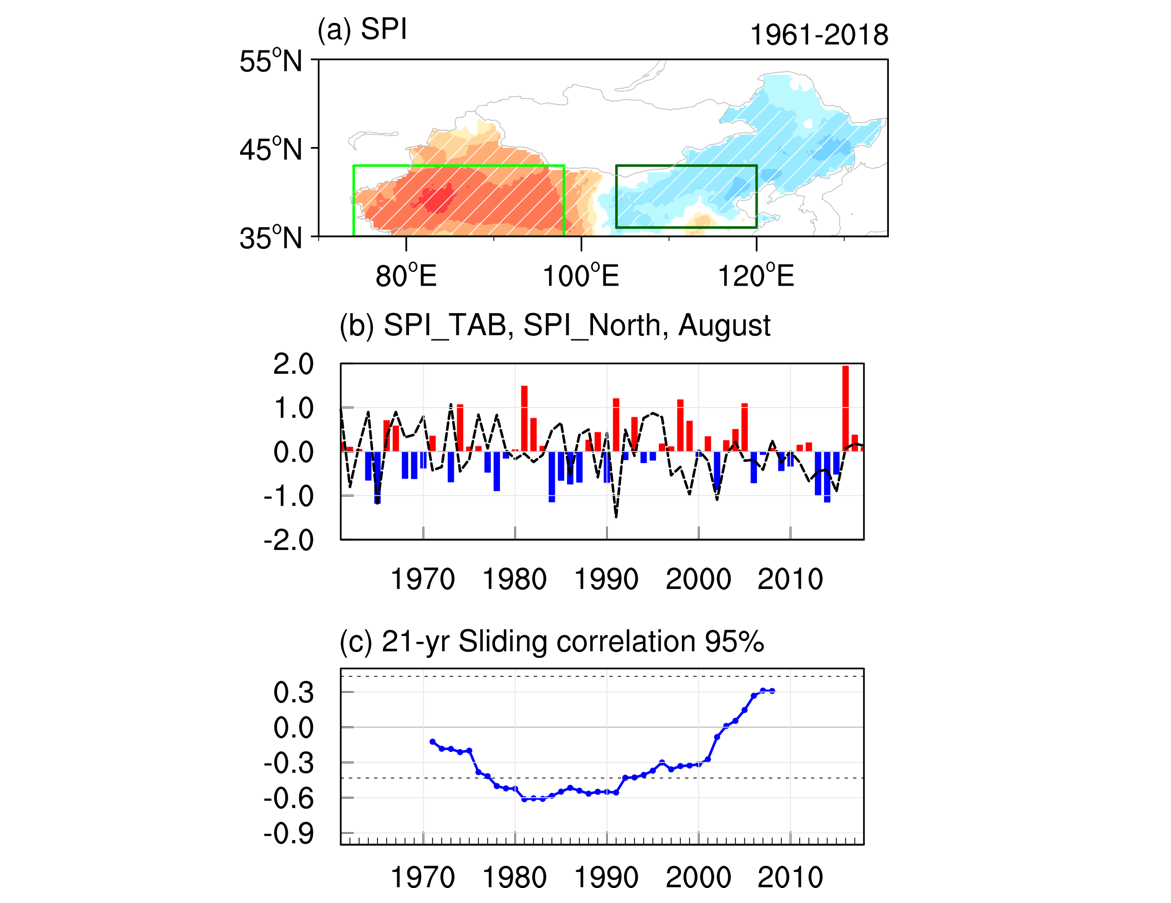【中文介绍】
随着全球变暖,我国北方地区极端天气气候事件增加,干旱问题尤为严重。中国北方(35°N以北)8月降水异常有显著的年际及年代际变化(图1):在1968至1992年期间,中国北方降水呈现“西正东负”的异常分布型,即西北地区偏湿,华北偏干;而在1994至2018年期间,西北地区偏湿,但与华北降水异常联系变得不显著。就上述现象,进一步分析发现大西洋海温和局地土壤湿度在中国北方降水变化中起着重要的作用:90年代初期以前,7月中亚土壤偏湿持续到8月,通过陆气相互作用激发局地纬向波列(低层表现为蒙古反气旋异常,西北太平洋气旋异常),使得西北地区降水偏多、华北降水偏少;90年代初期以后,土壤湿度关键区位于东欧平原,7月东欧平原土壤偏湿持续到8月,激发的纬向波列仅到中国西北地区,使得该地上升运动异常、降水偏多。此外,前期北(南)大西洋海温异常是1994-2018年(1968-1992年)中国北方降水异常的前兆信号。研究结果为深入理解中国北方气候干湿变化的季节预测提供重要科学依据。
【英文介绍】
This study examines August droughts in northern China (north of 35°N) at interannual and interdecadal timescales. During the period from 1968 to 1992, the precipitation in the western and eastern regions of northern China showed an out-of-phase pattern. During the period from 1994 to 2018, the climate in the Tarim Basin became wetter, but there was no significant connection with drought in North China. Further studies demonstrated that the Atlantic SST and regional soil moisture anomalies were related to drought changes in northern China. Before the early 1990s, the east-west standardized precipitation index (SPI) dipole mode in northern China was physically linked with the wet soil in central Asia in the preceding June; moreover, the wet land surface could persist until August and cause anticyclonic and cyclonic systems over Mongolia and the subtropical northwestern Pacific, thus contributing to precipitation surplus in northwest China and a deficit in North China. After the early 1990s, however, wet conditions over the Tarim Basin were related to wet soil in the East European Plain in the preceding July: the wet soil could persist into August and generate anomalous circulation over the Tarim Basin, leading to abnormal humidity. Additionally, the SST conditions in the North (South) Atlantic are key sources of climate predictability for northern China drought at the interseasonal scale after (before) the early 1990s.
【关键图表】

【引用格式】
Liu Y., Y. L. Zhu, and H. P. Chen, 2021: Interannual variability in August drought in northern China and the corresponding climate shift. Journal of Geophysical Research: Atmospheres, doi: 10.1029/2020JD034105.









